Geoblog.pl  bzmot
bzmot  Podróże
Podróże  Łosie okrakiem przez Amerykę - V2.0 - The Moose Do America Again - Click Here!!!
Łosie okrakiem przez Amerykę - V2.0 - The Moose Do America Again - Click Here!!!  Misja specjalna / On a mission
Misja specjalna / On a mission
 bzmot
bzmot  Podróże
Podróże  Łosie okrakiem przez Amerykę - V2.0 - The Moose Do America Again - Click Here!!!
Łosie okrakiem przez Amerykę - V2.0 - The Moose Do America Again - Click Here!!!  Misja specjalna / On a mission
Misja specjalna / On a mission 
Skoro autobus wyrzucił nas w San Ignacio de Velasco, postanowiliśmy zwiedzić misje jezuickie regionu Chiquitanos (inaczej zwanego Chiquitanią). Wielu ludzi wybiera sobie jedną, wychodząc z założenia, że i tak są do siebie podobne. Ale my się nigdzie nie spieszymy, więc co nam szkodzi. Zwłaszcza, że można po kilka obejrzeć za jednym zamachem. Jezuici przybyli w te okolice ponad sto lat po tym, jak Hiszpanie sobie ich kolonizację odpuścili. Podbojowi ogniem i mieczem Indianie powiedzieli nie, ale okazali się chętni do ucywilizowania w sposób pokojowy. Bo cywilizacja, zamiast niewolniczej pracy, jak w innych koloniach, oznaczała życie w komunie, gdzie wszyscy pracują dla dobra ogółu. Jedyny przypadek w historii, gdzie socjalizm wypalił. A o tym że taki system im odpowiadał niech poświadczy fakt, że nie było buntów, chociaż na kilkuset mieszkańców mnisi stanowili drobny ułamek. A po wypędzeniu Jezuitów przez Hiszpanów tubylcy tak długo jak mogli utrzymywali zaprowadzony przez nich ład. W misjach kwitła kultura barokowa, zwłaszcza muzyka, która dla zakonników była ważnym narzędziem ewangelizacji. Wiele miejscowych kompozycji, w tym msze w lokalnym narzeczu, można usłyszeć w wykonaniu tutejszych zespołów, ubranych w urocze giezła, ale występy są rzadkie. Najbardziej misje ożywają na przełomie kwietnia i maja, podczas międzynarodowego festiwalu amerykańskiej muzyki renesansowej i barokowej. Za naszej bytności było puściutko i cichutko i, oprócz Concepción, byliśmy jedynymi turystami. Trzy misje w okolicy San Ignacio można zwiedzić jednego dnia taksówką. Taksówkarz wie, gdzie szukać faceta z kluczami, co bardzo ułatwia sprawę. Gadatliwy starszy pan – wegetarianin i adept jogi – przekonany był, że Bośnia jest stolicą Polski, piwo boliwijskie jest drugie najlepsze po niemieckim, a Argentyna zbankrutowała przez kosztowną budowę autostrad. Akurat trafił nam się jedyny zimny i szary dzień, mały atak el Sur. Ale na następny dzień zapowiedziano „paro civico” czyli strajk generalny, więc nikt by nas na wycieczkę nie zabrał. No i faktycznie, wszystko zamarło. Sześć z dziewięciu departamentów w proteście przeciwko polityce rządu na 24 godziny wstrzymało wszelką pracę. Transport stanął, tłoczny zwykle rynek zamknięty na trzy spusty, a miasteczko wyglądało jak wymarłe. Tylko nieliczne jadłodajnie się zlitowały, ale też obsługiwały po cichu. Trzeba było wiedzieć gdzie zapukać, to przyjmowali w konspiracji. Wszystko odbyło się w spokoju, tylko CNN jakieś poranne incydenty rozdmuchał, strasząc rozruchami. Niech żyją amerykańskie wolne media. Za to Boliwijczycy egzamin z demokracji zdają na piątkę. Mieli tu już tyle dyktatur, że są przeczuleni i histerycznie reagują na objawy ograniczania wolności. W Santa Cruz prezydent uchodzi za marionetkę Chaveza i Fidela. Jego politykę nazywa się tu narcocomunismo, ale cruceños od początku kadencji byli mu przeciwni. Ciekawe, że ostatnio poparcie stracił również w kilku departamentach typowo andyjskich, w swoim politycznym zapleczu. Pod tym względem zatarł się tradycyjny podział na kollas i cambas czyli na Indian z altiplano, którzy popierali dotąd swojego i resztę kraju, czyli trzy departamenty nizinno-dżunglowe.
Ale tylko pod tym względem, bo podział jest wyraźny gołym okiem. Myślałam, że to podział na Indian i kreoli, ale nic bardziej mylnego. Niejeden spotkany przez nas camba wyglądał bardziej autochtonicznie od Eva. Pytani o wyjaśnienie camba twierdzili, że kolla jest ten kto mówi w aymara albo keczua. Ale zaraz się plątali, że wszyscy w La Paz są kollami, bo mają ten sam wyraźny akcent (tzn. nie zjadają „s” jak cambas). Ogólnie kollas są traktowani z dużą rezerwą, jeśli nie z pogardą. Nawet we Floridzie słyszałam, że tam gdzie są kollas, wszystko się sypie. Drodzy cambas, gdyby nie kollas, to byście nie mieli co jeść. To warkoczaste cholity od rana do nocy cały handel rozkręcają. Jak przejeżdżaliśmy przez wioskę, gdzie kollas nie dotarli (jednak dość rzadki fenomen), nie było nawet gdzie picia zimnego kupić. To dzięki cholitom podróż po Boliwii jest znośna, bo w najbardziej nieludzkim klimacie wytrzasną owoce, soki i przekąski, które jękliwie wtaczają do autobusu. A w miastach co sto metrów można wypić świeżo wyciskany sok z cytrusów, za grosze.
Taksówkarz dał nam namiary na faceta, co w domu tapira dorosłego trzyma. Przygarnął sierotę za młodu i wyrosła. Znaleźliśmy don Chicho, przywitał nas jak starych znajomych, ale tapir niestety już nieaktualny. Wypuścili go na wolność, a ten przy pierwszej okazji dał się żmii załatwić. Chyba nie pisane nam spotkanie z tapirem.
Dzień po strajku pojechaliśmy do Concepción znanego jako Conce – tu się chętnie nazwy skraca. Plac każdej misji wygląda niemal identycznie, te same domki na kolumnach i parczek pośrodku. Ale widać, że ta jest bardziej dolarowa, bo są jakieś przybytki dla turystów. Wylądować w San Rafael czy Santa Ana na noc to ja bym nie chciała. Psy szczekają dupami. Conce też malutkie i, o dziwo, nawet na placu ma piaszczystą nawierzchnię zamiast asfaltu, ale jakieś hotele i knajpy są. Nie ma jednak mowy o bankomacie czy Internecie. Zobaczyć tylko Concepción jako jedyną misję byłoby błędem. Jak dla mnie kościół trochę cepeliowy w zestawieniu z bardziej subtelnymi sąsiadami. A najciekawszy chyba jest San Javier, do którego też musieliśmy wziąć taxi z Conce, bo autobus nijak nam się nie komunikował z dalszą podróżą do Santa Cruz. Za to do S. Cruz jechaliśmy po królewsku. Fotele odginały się do pozycji stomatologicznej prawie. Gdybyśmy się wcześniej za biletami rozejrzeli, to ta sama firma (Jenecherú) ma nawet prawdziwą coche cama – na własne oczy widzieliśmy. Dwa piętra i trzy fotele w rzędzie. Teraz jednak nie dane nam będą takie luksusy bo wybieramy się na parę dni do Paragwaju. Ale na razie jeszcze mały relaks przy pracy w Santa Cruz.
Since the bus dropped us to San Ignacio de Velasco, we decided to visit Jesuit missions of the Chiquitanos (or Chiquitania) region. Many people just pick one seeing that they are similarly styled. But we are in no hurry so why not see them all. Especially that you can see a couple of them in one go. The Jesuits came down here over a hundred years after the Spaniards gave up their colonization efforts. The Indians (native South Americans ?) said no to armed conquest but turned out eager to be civilized by peaceful measures. Because civilization here, rather than slave work like in other colonies, meant living in a commune where everybody works for the common good. This being the only time in history where socialism worked well. And the fact that there were no mutinies, even though the monks were just a fraction of the population goes to show how the locals liked the system. After the Spaniards expelled the Jesuits, the locals maintained the mission lifestyle as long as they could. Baroque culture flourished in the mission, especially music which was a key evangelical tool for the monks. A lot of local compositions, including masses in the native tongue, can be heard played by music ensembles dressed in cute robes, but concerts are few and far between. The missions come alive at the turn of April and May, at the international American baroque and renaissance music festival. When we were there, it was all empty and quiet, and except Concepción, we were the only tourists. Three missions near San Ignacio can be visited in one day by taxi. The driver knows where to look for the guy with the keys, which makes things easier. The talkative old man – a vegetarian and yoga follower – was convinced that Bosnia is the capitak of Poland, Bolivian beer is only second to the German one and Argentina went bankrupt because it built expensive motorways. As luck would have it, it was the only cold and gray day, a short spell of el Sur. But for the next day „paro civico” or general strike was announced so nobody would take us for a ride. And so it was, everything stood still. Six out of nine departments stopped working as a sign of protest against the government’s policy. Transport was suspended, the always crowded market was locked up, and the town looked deserted Only a few restaurants had mercy on the hungry visitors, but they attended in secret. You needed to know which door to knock on to be served in conspiracy. The protest was peaceful and went mostly without disturbance, but CNN blew some incidents out of proportions, anticipating riots. Three cheers for the free American media. Bolivians, in turn, passed the exam in democracy. They have had so many dictatorships here that they oversensitive and react hysterically when they see any signs of freedom being restricted @. In Santa Cruz the president is considered Chavez and Fidel’s puppet. His policy is called narcocomunismo here, but cruceños were against him ever since he came to his position. What is more interesting is that he lost support also in some of the typically Andean departments that were his political springboard. In this respect, the traditional division into kollas and cambas that is into altiplano Indians who have so far supported one of their own and the rest of the country, the three low-lying jungle departments, is no more.
But otherwise, the division is still very clear. I thought it was the division into indigenous Bolivians and creoles, but I was wrong all the way. Many a camba we met looked more indigenous than Evo. When asked to clarify, cambas claim that kolla is a person that speaks aymara or keczua. But then they said everyone in La Paz is kolla, as they all have the same easily understandable accent (that is they don’t drop „s” sound as the cambas do). Generally, kollas are treated with a lot of reserve if not contempt. Even in Florida I heard that wherever kollas are everything goes south. Dear cambas, if it weren’t for kollas, you would have nothing to eat. It is the plait-wearing cholitas that get trade doing from dawn till dusk. When we were going through a village not reached by kollas yet (a rare case), there was nowhere to buy cold water. It’s cholitas that make traveling in Bolivia doable, as even in the deadliest of climates they manage to produce fruit, juice and snacks which they cater to buses with their moaning sales pitch. And in the city, you can drink freshly squeezed orange juice at every street corner, for pennies.
A cabbie gave us an address of a guy who kept an adult tapir in the backyard. He took it in as a pup and then it grew big. We found don Chicho, he welcomed us like old friends but the tapir was long gone. They set it free, and soon after it got stung by a viper. I think we’re doomed not to meet a tapir.
A day after the strike we went to Concepción known as Conce, as place names are usually shortened here. The main square in every mission looks similar, with the same columnated houses and a park in the middle. But you can tell this mission is more tourist-oriented as there are some facilities. I wouldn’t like to stay overnight in San Rafael or Santa Ana. Conce is small as well and, surprisingly, there’s dirt even around the main square rather than asphalt, but there are some hotels and restaurants. Still, forget ATM or Internet. To see just the Concepción mission and no other would be a mistake. For me, the church seems a bit over the top, compared to the more subtle neighbors. And the most interesting one is that of San Javier, that we had to visit by taxi from Conce, as there was no bus connection to continue to Santa Cruz. But to S. Cruz we traveled in style. The seats reclined almost like at the dentist’s. If we had bought the tickets earlier, the same bus company (Jenecherú) has even a real coche cama – we saw it with our own eyes. Two decks and three seats in a row. Now we should forget such luxury, though, as we are going to Paraguay for a couple of days. But first some relaxing work to do in Santa Cruz.
Ale tylko pod tym względem, bo podział jest wyraźny gołym okiem. Myślałam, że to podział na Indian i kreoli, ale nic bardziej mylnego. Niejeden spotkany przez nas camba wyglądał bardziej autochtonicznie od Eva. Pytani o wyjaśnienie camba twierdzili, że kolla jest ten kto mówi w aymara albo keczua. Ale zaraz się plątali, że wszyscy w La Paz są kollami, bo mają ten sam wyraźny akcent (tzn. nie zjadają „s” jak cambas). Ogólnie kollas są traktowani z dużą rezerwą, jeśli nie z pogardą. Nawet we Floridzie słyszałam, że tam gdzie są kollas, wszystko się sypie. Drodzy cambas, gdyby nie kollas, to byście nie mieli co jeść. To warkoczaste cholity od rana do nocy cały handel rozkręcają. Jak przejeżdżaliśmy przez wioskę, gdzie kollas nie dotarli (jednak dość rzadki fenomen), nie było nawet gdzie picia zimnego kupić. To dzięki cholitom podróż po Boliwii jest znośna, bo w najbardziej nieludzkim klimacie wytrzasną owoce, soki i przekąski, które jękliwie wtaczają do autobusu. A w miastach co sto metrów można wypić świeżo wyciskany sok z cytrusów, za grosze.
Taksówkarz dał nam namiary na faceta, co w domu tapira dorosłego trzyma. Przygarnął sierotę za młodu i wyrosła. Znaleźliśmy don Chicho, przywitał nas jak starych znajomych, ale tapir niestety już nieaktualny. Wypuścili go na wolność, a ten przy pierwszej okazji dał się żmii załatwić. Chyba nie pisane nam spotkanie z tapirem.
Dzień po strajku pojechaliśmy do Concepción znanego jako Conce – tu się chętnie nazwy skraca. Plac każdej misji wygląda niemal identycznie, te same domki na kolumnach i parczek pośrodku. Ale widać, że ta jest bardziej dolarowa, bo są jakieś przybytki dla turystów. Wylądować w San Rafael czy Santa Ana na noc to ja bym nie chciała. Psy szczekają dupami. Conce też malutkie i, o dziwo, nawet na placu ma piaszczystą nawierzchnię zamiast asfaltu, ale jakieś hotele i knajpy są. Nie ma jednak mowy o bankomacie czy Internecie. Zobaczyć tylko Concepción jako jedyną misję byłoby błędem. Jak dla mnie kościół trochę cepeliowy w zestawieniu z bardziej subtelnymi sąsiadami. A najciekawszy chyba jest San Javier, do którego też musieliśmy wziąć taxi z Conce, bo autobus nijak nam się nie komunikował z dalszą podróżą do Santa Cruz. Za to do S. Cruz jechaliśmy po królewsku. Fotele odginały się do pozycji stomatologicznej prawie. Gdybyśmy się wcześniej za biletami rozejrzeli, to ta sama firma (Jenecherú) ma nawet prawdziwą coche cama – na własne oczy widzieliśmy. Dwa piętra i trzy fotele w rzędzie. Teraz jednak nie dane nam będą takie luksusy bo wybieramy się na parę dni do Paragwaju. Ale na razie jeszcze mały relaks przy pracy w Santa Cruz.
Since the bus dropped us to San Ignacio de Velasco, we decided to visit Jesuit missions of the Chiquitanos (or Chiquitania) region. Many people just pick one seeing that they are similarly styled. But we are in no hurry so why not see them all. Especially that you can see a couple of them in one go. The Jesuits came down here over a hundred years after the Spaniards gave up their colonization efforts. The Indians (native South Americans ?) said no to armed conquest but turned out eager to be civilized by peaceful measures. Because civilization here, rather than slave work like in other colonies, meant living in a commune where everybody works for the common good. This being the only time in history where socialism worked well. And the fact that there were no mutinies, even though the monks were just a fraction of the population goes to show how the locals liked the system. After the Spaniards expelled the Jesuits, the locals maintained the mission lifestyle as long as they could. Baroque culture flourished in the mission, especially music which was a key evangelical tool for the monks. A lot of local compositions, including masses in the native tongue, can be heard played by music ensembles dressed in cute robes, but concerts are few and far between. The missions come alive at the turn of April and May, at the international American baroque and renaissance music festival. When we were there, it was all empty and quiet, and except Concepción, we were the only tourists. Three missions near San Ignacio can be visited in one day by taxi. The driver knows where to look for the guy with the keys, which makes things easier. The talkative old man – a vegetarian and yoga follower – was convinced that Bosnia is the capitak of Poland, Bolivian beer is only second to the German one and Argentina went bankrupt because it built expensive motorways. As luck would have it, it was the only cold and gray day, a short spell of el Sur. But for the next day „paro civico” or general strike was announced so nobody would take us for a ride. And so it was, everything stood still. Six out of nine departments stopped working as a sign of protest against the government’s policy. Transport was suspended, the always crowded market was locked up, and the town looked deserted Only a few restaurants had mercy on the hungry visitors, but they attended in secret. You needed to know which door to knock on to be served in conspiracy. The protest was peaceful and went mostly without disturbance, but CNN blew some incidents out of proportions, anticipating riots. Three cheers for the free American media. Bolivians, in turn, passed the exam in democracy. They have had so many dictatorships here that they oversensitive and react hysterically when they see any signs of freedom being restricted @. In Santa Cruz the president is considered Chavez and Fidel’s puppet. His policy is called narcocomunismo here, but cruceños were against him ever since he came to his position. What is more interesting is that he lost support also in some of the typically Andean departments that were his political springboard. In this respect, the traditional division into kollas and cambas that is into altiplano Indians who have so far supported one of their own and the rest of the country, the three low-lying jungle departments, is no more.
But otherwise, the division is still very clear. I thought it was the division into indigenous Bolivians and creoles, but I was wrong all the way. Many a camba we met looked more indigenous than Evo. When asked to clarify, cambas claim that kolla is a person that speaks aymara or keczua. But then they said everyone in La Paz is kolla, as they all have the same easily understandable accent (that is they don’t drop „s” sound as the cambas do). Generally, kollas are treated with a lot of reserve if not contempt. Even in Florida I heard that wherever kollas are everything goes south. Dear cambas, if it weren’t for kollas, you would have nothing to eat. It is the plait-wearing cholitas that get trade doing from dawn till dusk. When we were going through a village not reached by kollas yet (a rare case), there was nowhere to buy cold water. It’s cholitas that make traveling in Bolivia doable, as even in the deadliest of climates they manage to produce fruit, juice and snacks which they cater to buses with their moaning sales pitch. And in the city, you can drink freshly squeezed orange juice at every street corner, for pennies.
A cabbie gave us an address of a guy who kept an adult tapir in the backyard. He took it in as a pup and then it grew big. We found don Chicho, he welcomed us like old friends but the tapir was long gone. They set it free, and soon after it got stung by a viper. I think we’re doomed not to meet a tapir.
A day after the strike we went to Concepción known as Conce, as place names are usually shortened here. The main square in every mission looks similar, with the same columnated houses and a park in the middle. But you can tell this mission is more tourist-oriented as there are some facilities. I wouldn’t like to stay overnight in San Rafael or Santa Ana. Conce is small as well and, surprisingly, there’s dirt even around the main square rather than asphalt, but there are some hotels and restaurants. Still, forget ATM or Internet. To see just the Concepción mission and no other would be a mistake. For me, the church seems a bit over the top, compared to the more subtle neighbors. And the most interesting one is that of San Javier, that we had to visit by taxi from Conce, as there was no bus connection to continue to Santa Cruz. But to S. Cruz we traveled in style. The seats reclined almost like at the dentist’s. If we had bought the tickets earlier, the same bus company (Jenecherú) has even a real coche cama – we saw it with our own eyes. Two decks and three seats in a row. Now we should forget such luxury, though, as we are going to Paraguay for a couple of days. But first some relaxing work to do in Santa Cruz.
Komentarze (0)






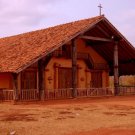
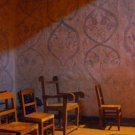
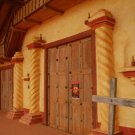
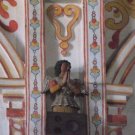
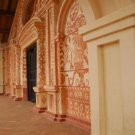
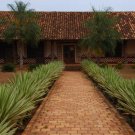
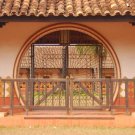
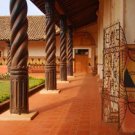
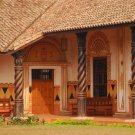
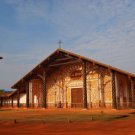
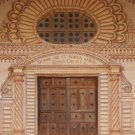
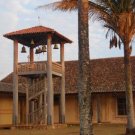
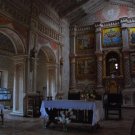
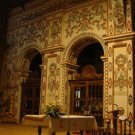


 Zasoby:
Zasoby: 






